The animal kingdom provides so much diversity that it’s almost impossible to keep track of all the different species in the world. Sometimes the distinction between close relatives is too hard to even notice. But different species often evolve in similar ways because of their environment.
We at Bright Side gathered 16 pairs of animals who are almost indistinguishable from each other at first sight in order to show you the differences between them.
1. Jaguar vs leopard

Despite their similarities, these big cats inhabit different continents and climate zones: leopards live in African savannas, while jaguars dwell in South American tropical forests. Jaguars are also larger and bulkier, and unlike leopards and many other cats, they’re fond of water.
2. Alligator vs crocodile
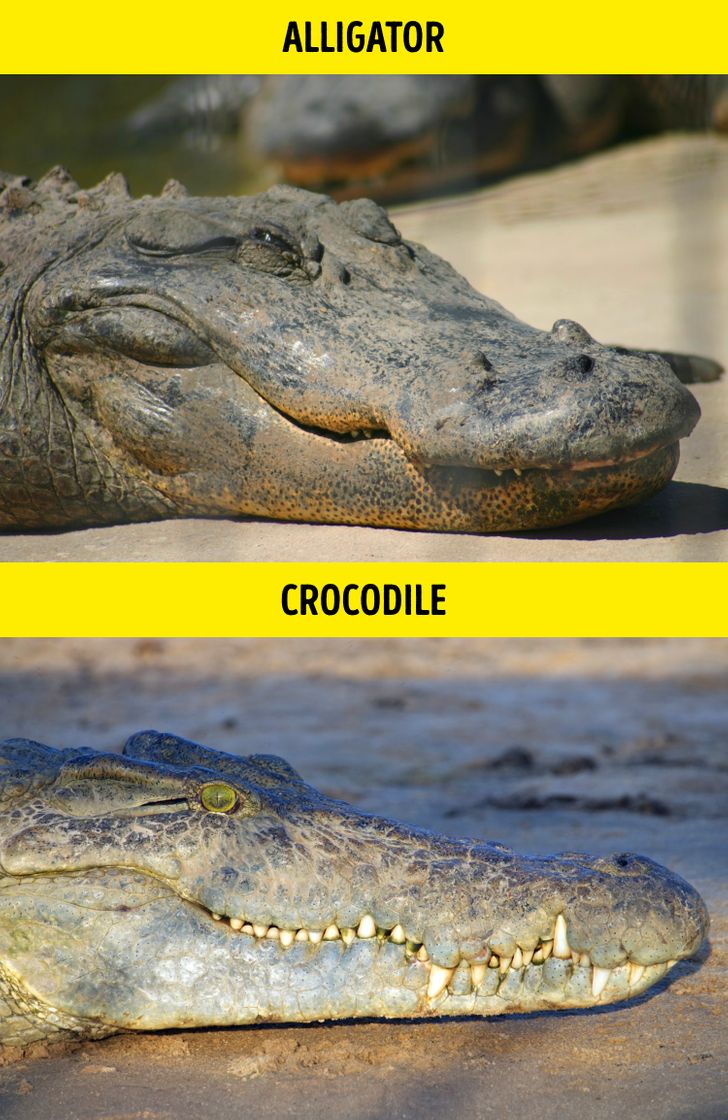
You can easily identify these 2 by the shape of their snouts: crocodiles have prominent, elongated V-shaped faces while alligators have shorter, wider U-shaped ones. Also, consider the teeth: crocodiles display their trademark toothy “grin” with every fourth tooth visible. Conversely, the alligator’s upper jaw is broader than the lower one, so its teeth aren’t visible for the most part.
3. Wasp vs hornet
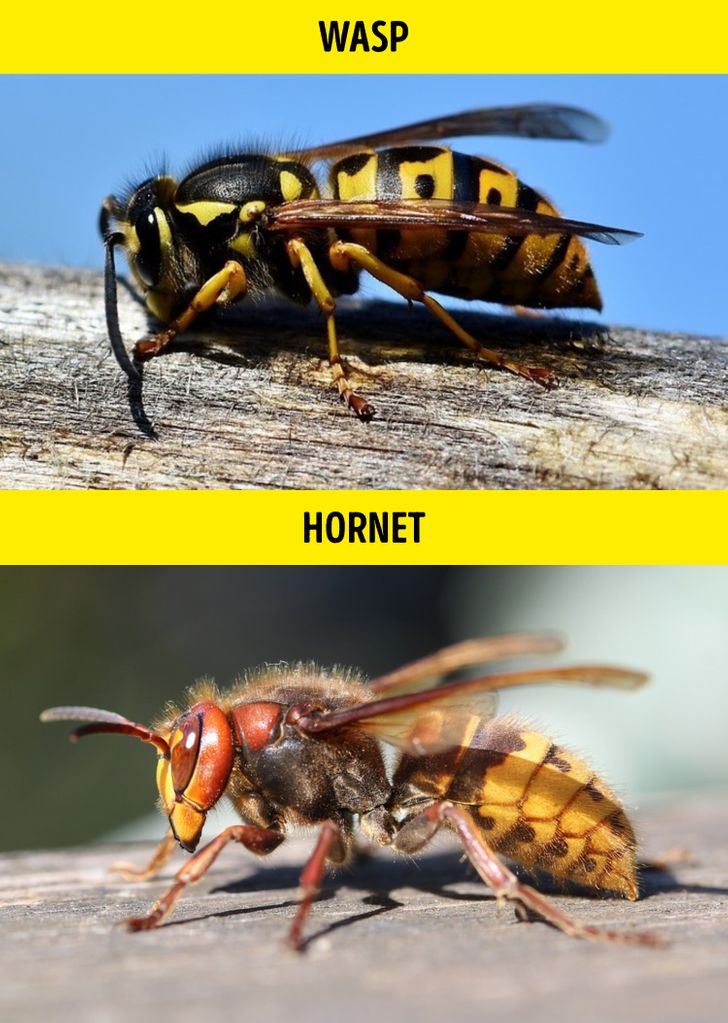
Both insects are menacing, that’s for sure. Hornets are larger and boast orange and black coloring, resembling spots rather than stripes, while wasps are more brightly colored and have yellow and black rings. You’re better off avoiding both.
4. Seal vs sea lion

You’ve most likely met seals as cute plushy animals and sea lions as circus acrobats. Seals are covered with fur and have tiny front flippers which prevent them from walking, forcing them to wiggle on their bellies. Sea lions have smooth skin and vast flippers that they use to move on the ground.
5. Turtle vs tortoise
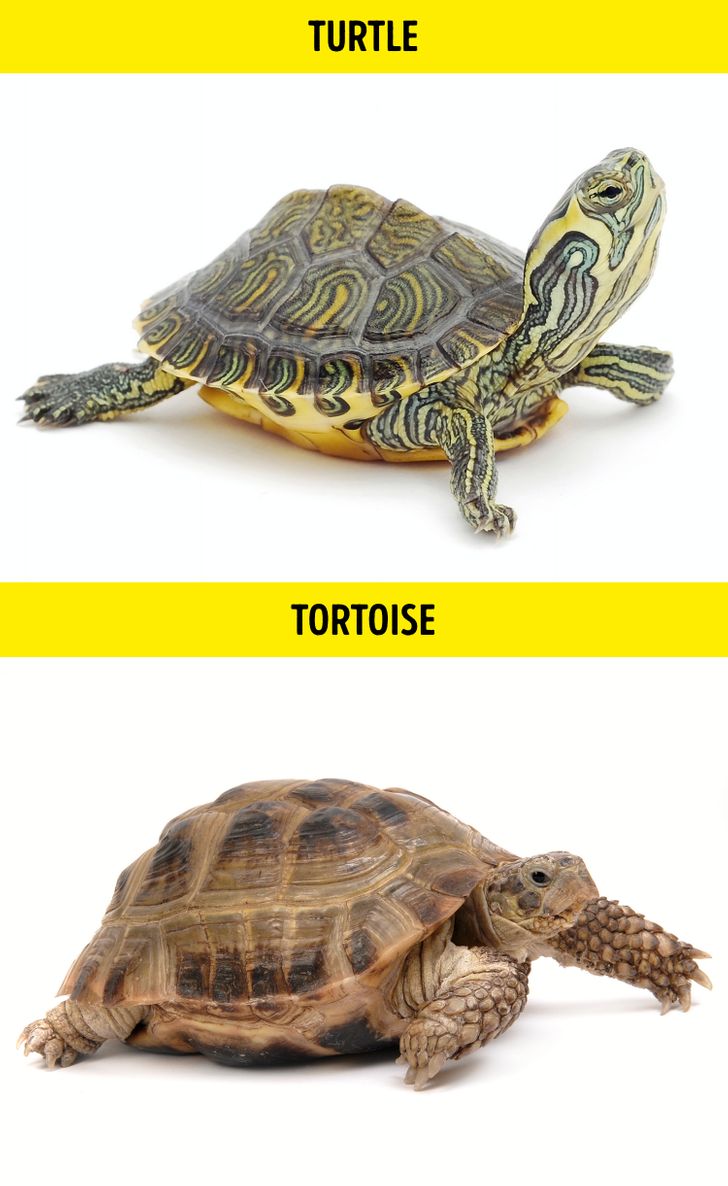
These 2 are both mobile (but very slow at that) and boast 4 legs. But the “turtle rock” is aquatic and has markings that resemble stains and circles on the water to better hide in the ponds. The “tortoise rock” is a land animal and spends most of its time on the ground — that is, as a literal rock.
6. Raven vs crow vs rook vs jackdaw

Most corvids look fairly similar (excluding jays who are like a theatre kid in a goth family). Ravens are the loftiest and most fashionable thanks to their “beard” of throat feathers. Crows and rooks are of the same size, but rooks have a distinct grey beak and fancy feather “pants” on their legs. Jackdaws are the goofiest-looking thanks to their very short beaks and a round heads with black caps.
7. Donkey vs mule
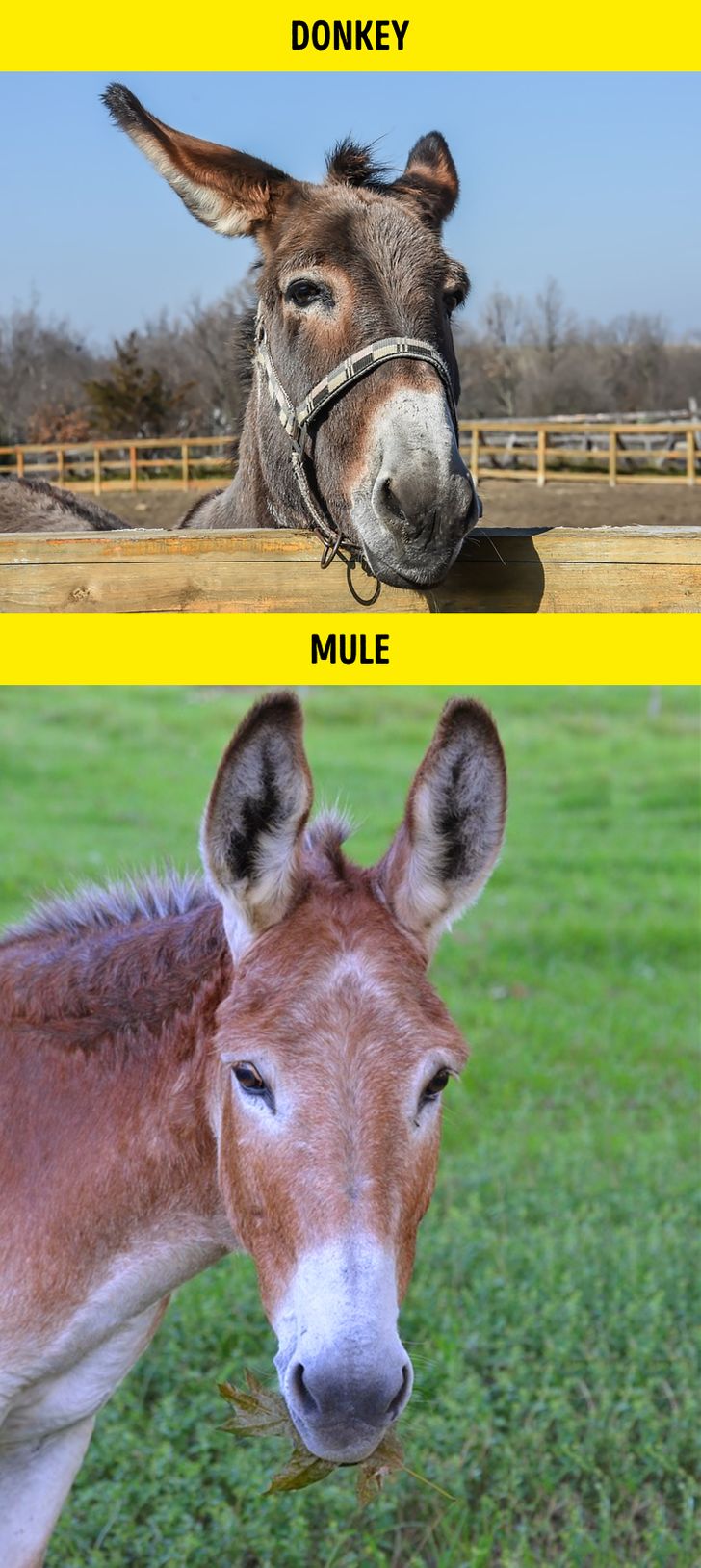
This one is tricky for a simple reason: while the donkey is its own species, a mule is a hybrid of donkey and horse. Funnily enough, it looks exactly like what you’d think these 2 animals would look like: an elegant head of a horse with ridiculously oversized donkey ears.
8. Hare vs rabbit

If you want a cuddly little pet, a rabbit is your best bet, but a hare definitely is not. Hares are larger and faster and have longer legs and ears. Rabbits are smaller, fluffier, and overall “cuter.” They even eat different food: rabbits prefer vegetables (like carrots) and soft grass while hares prefer bark and twigs. Rabbits are social animals while hares tend to be solitary. It’s no wonder rabbits are easily domesticated while hares mostly stay feral.
9. Moth vs butterfly
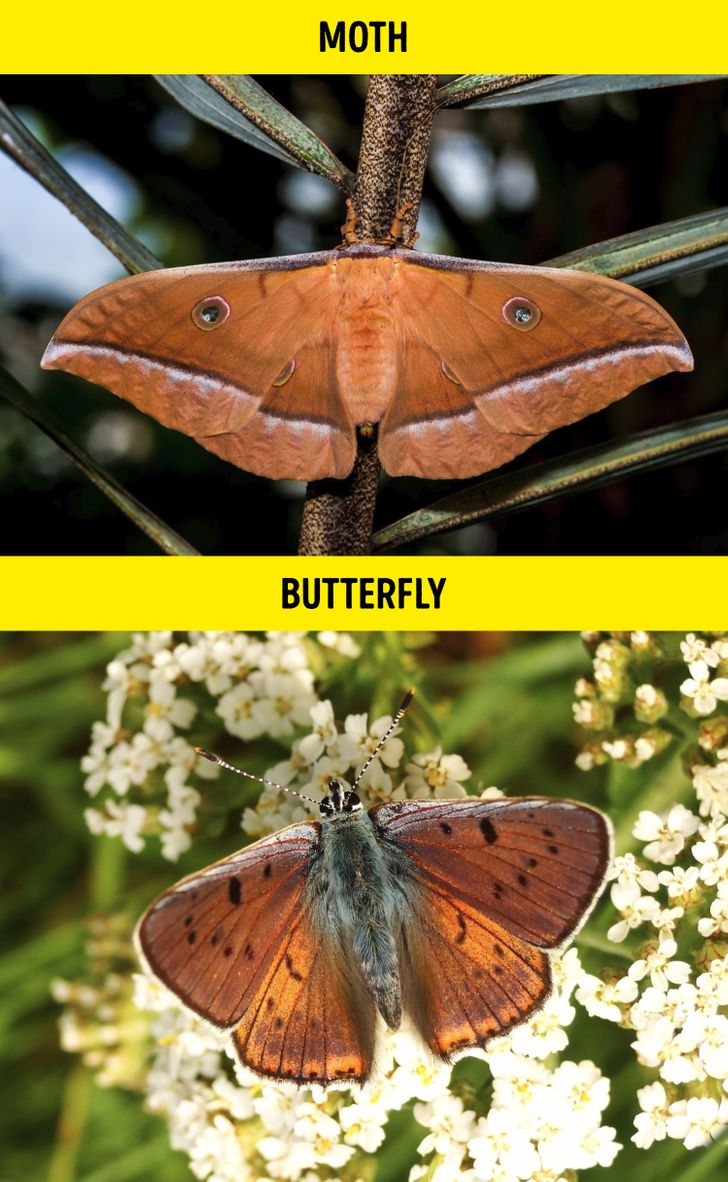
Moths have tent-like wings while butterflies flap their wings vertically. Moths usually rest with their wings open, while butterflies rest with their wings closed. Their antennas also differ: butterflies’ are long and thin and moths’ are short and feathery. Butterflies are strictly diurnal, while moths are mostly nocturnal.
10. Dolphin vs porpoise

The difference between dolphins and porpoises comes down to their snouts, fins, and figures. Dolphins have long “beaks,” slender bodies, and curved dorsal fins. Porpoises have more flat, sloping faces, smaller flippers, and shorter triangular dorsal fins.
11. Weasel vs stoat
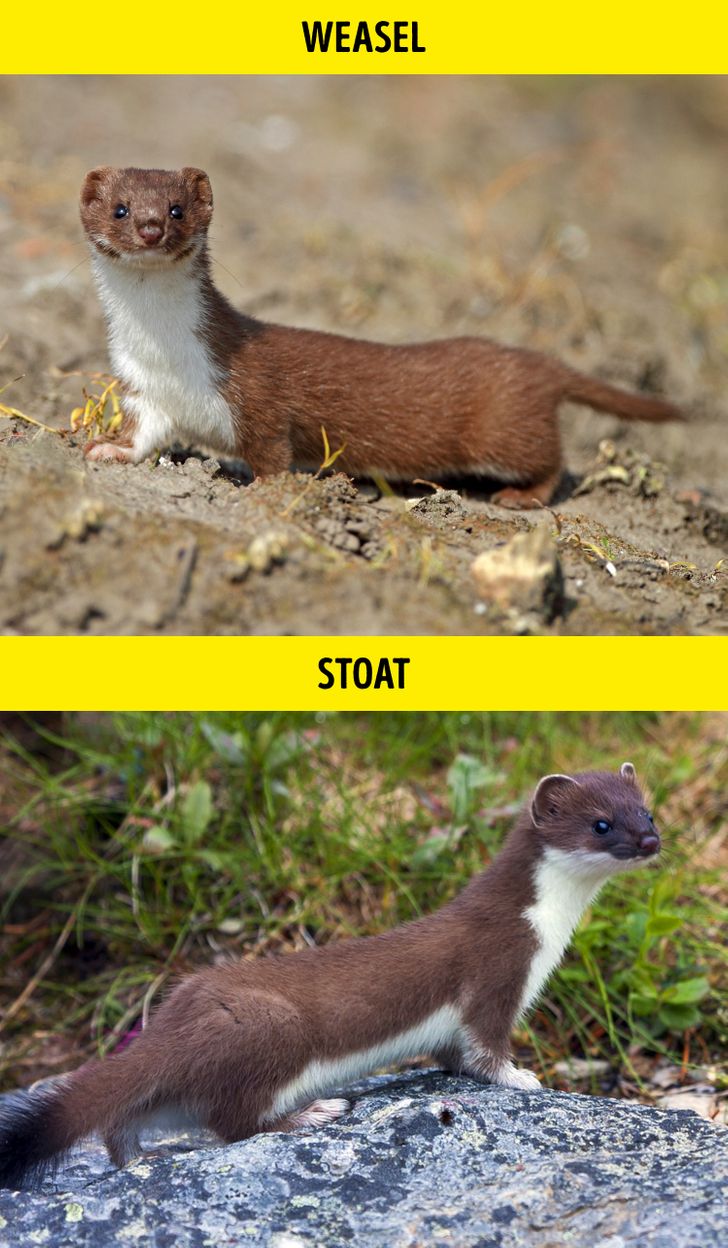
These 2 animals are close relatives. Stoats are bigger and have long tails with fuzzy black tips, while weasels’ tails are short and of the same color as the rest of the body. Stoats move in a bouncing gait with an arched back which looks hilarious, and weasels keep closer to the ground. Stoats also turn white in winter.
12. Eagle vs hawk vs falcon

Eagles are gigantic, powerful birds who prefer to live in open spaces like cliffs and mountains. Hawks are a little smaller and more nimble in the air, capable of maneuvering in more closed areas. Falcons are the smallest and fastest of the 3 and differentiate the most visually: they have larger eyes and shorter beaks.
13. Mouse vs rat
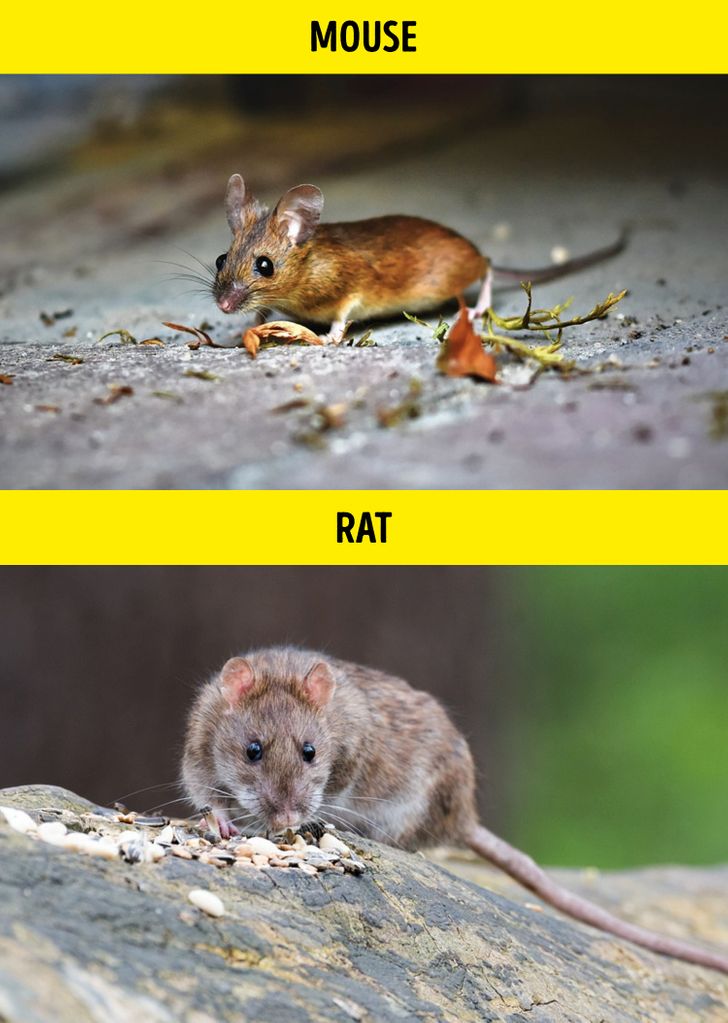
The 2 most famous (or infamous) rodents can be easily distinguished by 3 things: their size, tail, and ears. Mice are diminutive, even compared to young rats; they have thin long tails covered with fur while rats’ tails are thick and hairless. Mice have ears that are bigger in proportion to their bodies and are round and floppy with a tiny, triangular face. Rats’ faces are more prominent and blunt.
14. Seagull vs albatross
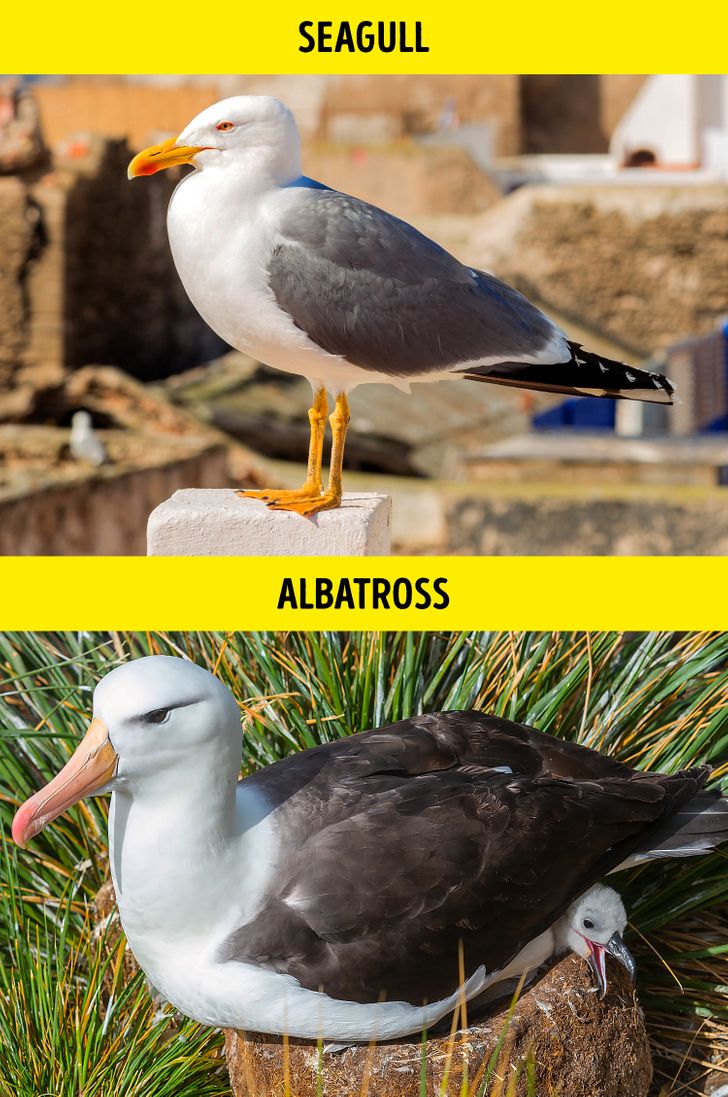
Gulls often live near water, be it the sea or ponds, and are rather acrobatic while diving and fish-catching, but aren’t fans of long voyages, unlike albatrosses. Albatrosses are portly birds who live in constant flight over the sea. They even have unique nostrils that allow them to remove salt from water and food.
15. Wolverine vs honey badger

Despite living in different climate zones — the honey badger that lives in Africa and the wolverine that resides in the northern forests — both belong to the Mustelidae family. Wolverines are taller with longer legs and noticeable ears and have brown fur with yellow rings. Honey badgers keep closer to the ground and have black bodies with a white “cape” on their backs.
16. Wolf vs coyote vs jackal
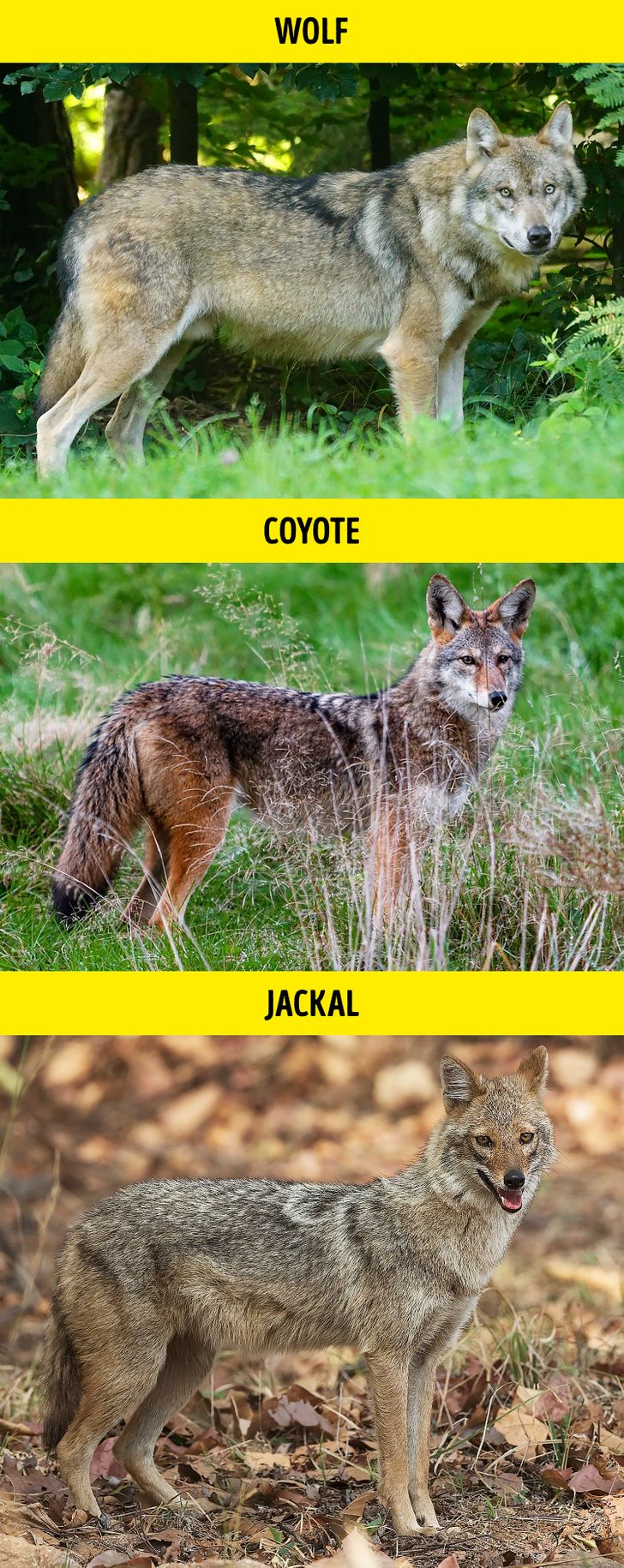
These 3 are “good boys and girls” that parade all over the globe. Jackals live in Africa, Asia, and India; coyotes live in Northern America; and wolves live all over the place. Wolves are large, sturdy animals, while coyotes and jackals possess a more lean and fragile frame.
Coyotes are recognizable for the red fur on their faces and ears while jackals have a more yellow-colored coat. Additionally, jackals are noticeably less fluffy because they don’t have to endure the harshness of winter.
Funny bonus: Wolverine vs the honey badger

What kinds of animals have ever confused you? If you know more examples, share them in the comments!
Preview photo credit shutterstock.com, shutterstock.com
I had no idea
Have you ever wondered if you’re washing your pajamas too often—or not enough? The conversation about pajama hygiene can be surprisingly divisive. Some people wash them after each use, while others stretch it out for a week or more. So, how often should you really be washing your pajamas? Let’s break it down by considering hygiene, health, environmental impact, and expert opinions.
Understanding Personal Hygiene and Pajama-Washing Preferences
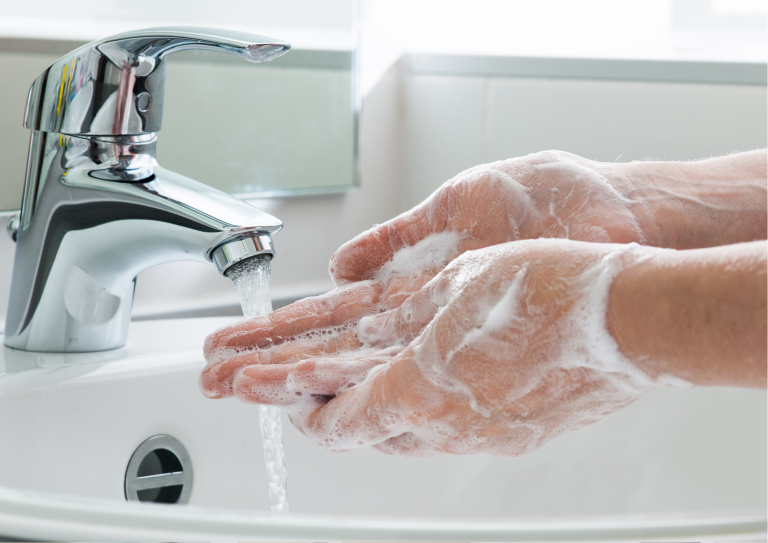
When it comes to hygiene, everyone has their own standards. Some people feel uncomfortable re-wearing pajamas more than once, while others are fine wearing them multiple times before tossing them in the laundry. Factors like skin type, sweating, and bedtime routines play a major role in how often you should wash your sleepwear.
For example, if you shower before bed and wear fresh pajamas each night, you might not need to wash them as frequently. On the other hand, if you sweat at night or have sensitive skin, you may want to opt for more frequent washing.
Factors That Influence How Often You Should Wash Pajamas
Several factors can determine your ideal pajama-washing routine. Here are the most important ones:
1. Nighttime Sweating
If you tend to sweat heavily at night, your pajamas can absorb bacteria and oils from your skin. This can lead to unpleasant odors, irritation, and even acne. If you sweat a lot, washing your pajamas every other day or after two wears is a good idea.
Video : Expert Advice: How Often to Wash Pajamas, Bedding, Jeans, Towels & More…
2. Skin Sensitivity and Allergies
People with sensitive skin or allergies should be mindful of how often they wash their pajamas. Dirt, sweat, and bacteria buildup can cause breakouts, irritation, or flare-ups of conditions like eczema. In such cases, washing after each use or every two wears is ideal.
3. Pajama Material and Fabric Type
Different fabrics require different washing routines. Cotton and flannel pajamas absorb more sweat and should be washed more frequently, while silk and satin tend to stay cleaner longer and can be washed less often. If you wear synthetic fabrics, keep in mind that they can trap bacteria and odors, requiring more frequent washing.
4. Climate and Season
The climate you live in can impact how often you should wash your pajamas. During hot and humid months, you may need to wash them more often, while in colder months, when you sweat less, you might be able to wear them longer before washing.
5. Whether You Shower Before Bed
If you shower before bed, you’re less likely to transfer sweat and dirt onto your pajamas. This means you can likely wear them 3–4 times before washing. However, if you don’t shower at night or wear your pajamas around the house, they may need more frequent washing.

Health Risks of Washing Pajamas Too Often or Too Seldom
Just like washing too little can lead to bacteria buildup, odors, and skin irritation, washing too often can also have drawbacks.
Problems with Not Washing Pajamas Often Enough
- Skin issues: Accumulated dirt, oils, and bacteria can clog pores and cause acne.
- Allergy flare-ups: Dust mites thrive in unwashed fabrics, leading to sneezing and itching.
- Unpleasant odors: Sweat and body oils can cause musty-smelling pajamas.
Problems with Washing Pajamas Too Often
- Faster fabric wear and tear – Washing too frequently can cause fabrics to fade, shrink, or lose softness.
- Higher environmental impact – Frequent washing consumes more water and energy, contributing to waste.
- Increased laundry workload – More washing means more time spent on laundry.
Environmental Impact: The Sustainability Factor
Did you know that over-washing your pajamas can have a negative impact on the environment? Every wash cycle uses water, electricity, and detergent, contributing to pollution and energy consumption. If you can wear your pajamas one or two extra nights before washing, you can reduce water usage and minimize your carbon footprint.
Tips for an Eco-Friendly Laundry Routine:
✔ Wash in cold water to save energy.
✔ Use eco-friendly detergents to reduce pollution.
✔ Only wash full loads to make the most of each wash cycle.
✔ Air-dry when possible to save electricity.
Expert Recommendations: How Often Should You Really Wash Pajamas?
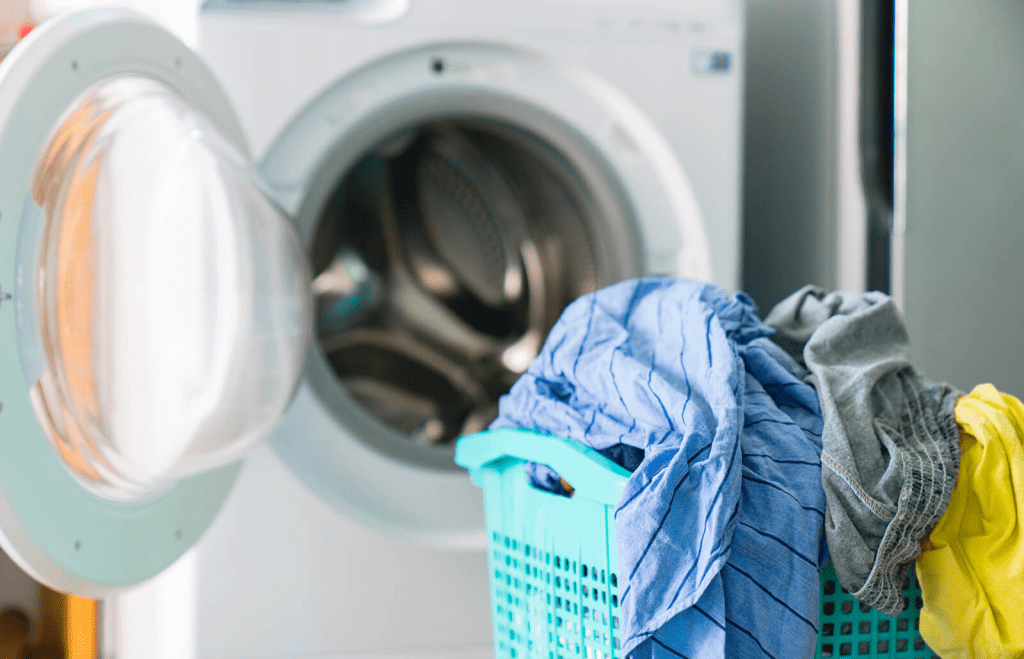
While the perfect washing schedule depends on your lifestyle, experts generally recommend washing pajamas after 3–4 wears. However, certain exceptions apply:
✅ Wash pajamas after 1–2 wears if you sweat a lot, have allergies, or wear tight-fitting sleepwear.
✅ Wash pajamas every 4–7 wears if you shower before bed, sleep in a cool room, and wear breathable fabrics.
✅ Wash immediately if your pajamas have stains, odors, or signs of irritation on your skin.
Cultural Differences in Pajama-Washing Habits
Different cultures have unique perspectives on pajama hygiene. In some countries, people wash their pajamas daily as part of a strict hygiene routine. In contrast, others wear them for a week or more before washing, emphasizing practicality and sustainability.
In Western cultures, it’s common to wear pajamas for a few nights before washing, while in parts of Asia, frequent washing is often the norm due to a greater focus on cleanliness.
Balancing Comfort and Cleanliness: Find Your Own Pajama-Washing Routine
Finding the right balance between comfort, hygiene, and sustainability is the key to determining how often you should wash your pajamas. Here are a few practical tips to maintain pajama hygiene:
Video : Do You Do Your Laundry Often Enough?
✔ Rotate between multiple pairs to reduce wear and tear on each set.
✔ Air out your pajamas during the day to keep them fresh.
✔ Spot-clean any stains immediately instead of washing the whole set.
✔ Follow fabric care instructions to maintain softness and longevity.
Final Thoughts: What Works Best for You?
Ultimately, the frequency with which you wash your pajamas depends on your personal habits, lifestyle, and health needs. Whether you choose to wash them every night, every few days, or weekly, the key is to strike a balance between comfort, cleanliness, and sustainability.
So, what’s your pajama-washing routine? Do you wash them after every wear, or do you stretch it out for several nights? Share your thoughts in the comments!



Leave a Reply